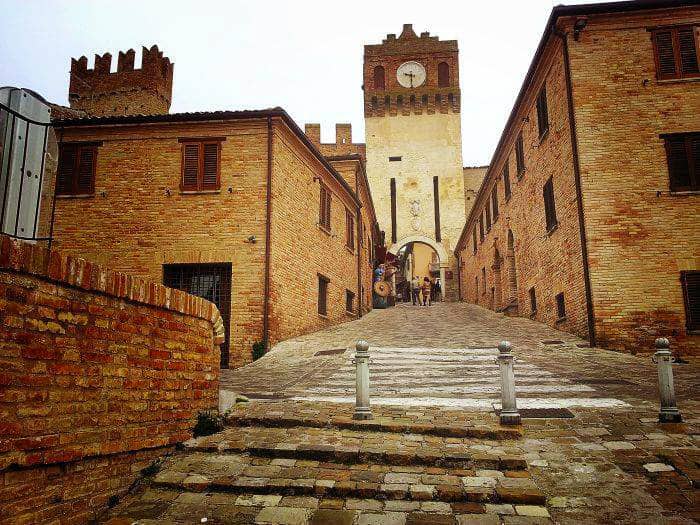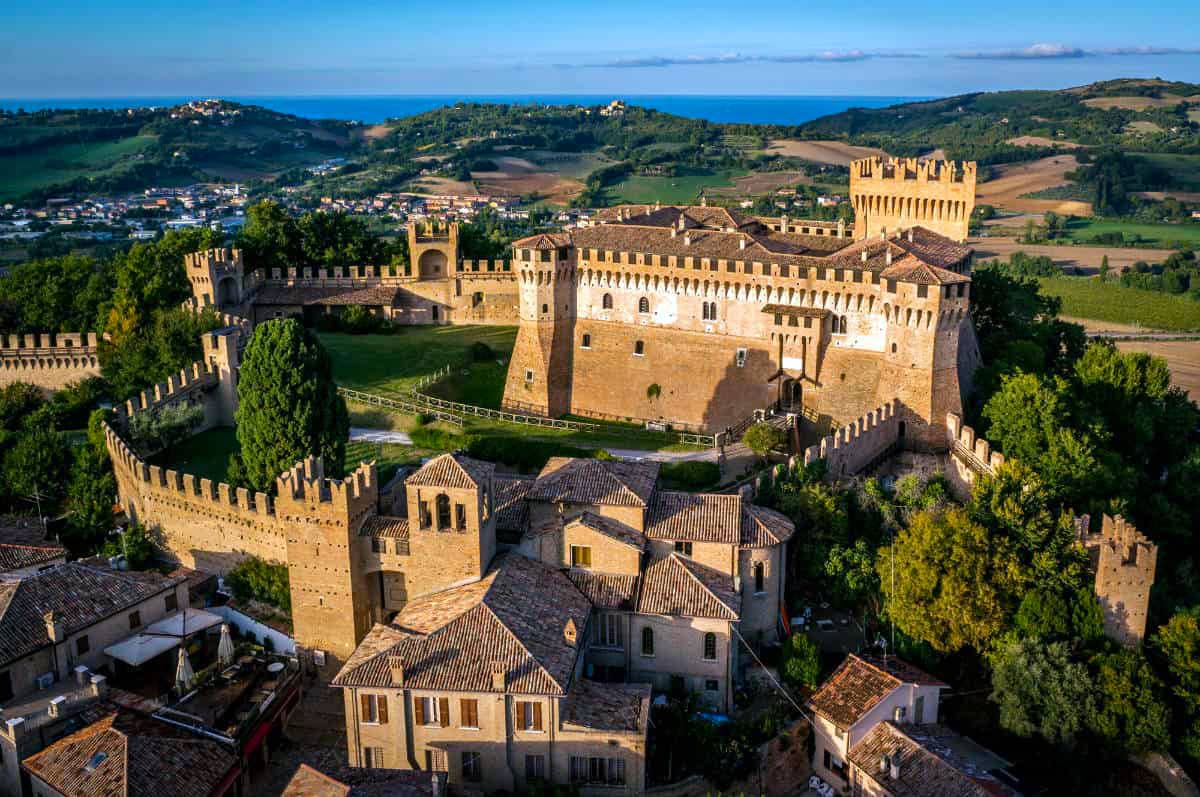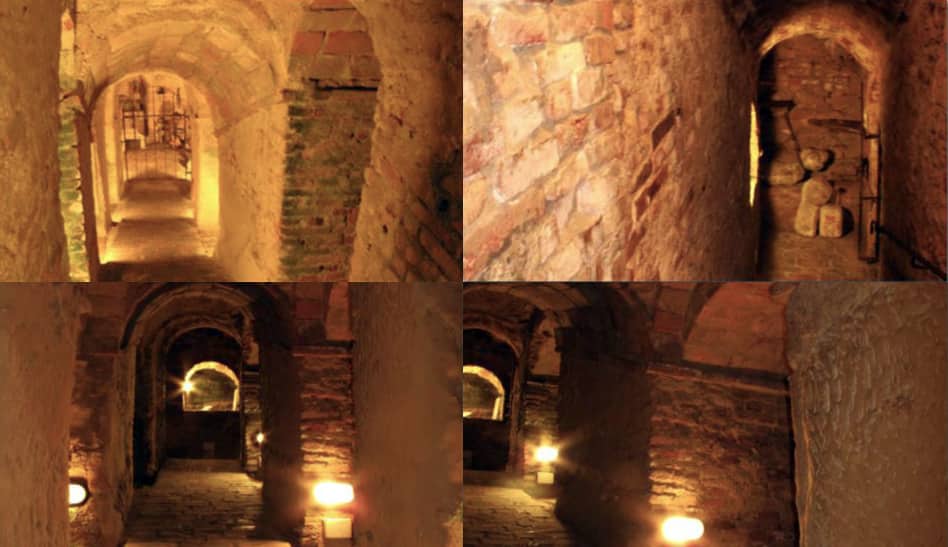Gradara 61012 PU
The village

The village is actually a very small historic center. A series of classical little streets that intertwine through the ancient buildings inside the medieval walls. You are welcomed by the main gate of the city, at the base of the ancient clock tower. And immediately you are captured by the magic atmosphere of the place, thanks to the colors of the tipical shops, frozen in time, and to the inviting smells of local dishes, just like the traditional tagliolini con la bomba. Of course there is no lack of historical events, such as the siege, which recalls the strenuous defense of the town in 1446. Furthermore, even the sea is close and so it is well visible from the path on the walls, which also gives many other views. Other interesting points in the village are: the merchant’s house, the olive garden and the palace Rubini Vesin. But the highlight is certainly the Castle.
Gradara Castle

The castle of Gradara is one of the most beautiful and most famous ones in Italy. It is strategically located at the highest point of the village and develops from the main tower, the Mastio, 30 meters high. It was built in 1150 by the De Griffo, but soon passed to the powerful family Malatesta. They built the 800-metre-long city wall, which is still standing today. The castle was never conquered, but other important names lived in its rooms: from the Della Rovere, to the Borgia up to the Medici. Among towers and beautiful medieval battlements, the fortress is definitely worth a visit. Also because right there took place one of the most famous scenes of the Divine Comedy, the one of Paolo and Francesca.
Paolo and Francesca room

The most fascinating stape of the route in the castle is precisely the room of Paolo and Francesca. According to many, it is here that the tragedy told by Dante in the fifth canto of the Inferno of the Divine Comedy was consumed. Francesca da Polenta, daughter of the lord of Ravenna, was given in marriage with a trap to Giovanni Malatesta, lord of Rimini, called lo sciancato (the cripple), as he was crippled and ugly. But the young woman fell in love with her husband’s brother, Paolo, a noble and courteous man, who, although already married, returned her love. During a night in September 1289 they were discovered and killed with the sword by Giovanni himself, right in that room.
Amor, ch'al cor gentil ratto s'apprende, prese costui de la bella persona che mi fu tolta; e 'l modo ancor m'offende. Amor, ch’a nullo amato amar perdona, mi prese del costui piacer sì forte, che, come vedi, ancor non m’abbandona. Amor condusse noi ad una morte.
The caves

The subsoil of Gradara is rich in tunnels and caves. Some of them are very ancient and are thought to have been excavated even 1500 years ago. It is not exactly known by whom they were made, nor for what purpose. Someone thinks they were used as secret meeting places. Probably in the Middle Ages they served as an escape route in case of danger, as they were perhaps connected to the dungeons of the castle. What is certain is that they inspire charm and mystery. There are 16 caves, of which 10 are accessible. The only one that can be visited, really appreciated by visitors and well preserved, is accessible through the Historical Museum of the city, another recommended stop in Gradara.
About the author
Written on 29/09/2020



Matteo Boccadamo
Gradara is a beautiful medieval village in the province of Pesaro-Urbino, in the Marches. It is absolutely worth a visit and nowaday quite famous. It is considered by many the capital of the Middle Ages, awarded the Bandiera arancione (orange flag) since 2004 and winner of the Borgo dei borghi 2018 award. It offers unique itineraries among fortifications, suggestive views, traditions and legends.